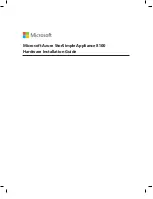
Chapter 3 Installing the Cisco 12404 Internet Router
Configuration Changes
3-63
Cisco 12404 Internet Router Installation and Configuration Guide
OL-11636-01
The following configuration dialog example shows the system being configured
for an Ethernet interface that will use the IP network layer protocol. (The Ethernet
interface does not support external routing functions.) The IP address and subnet
mask value are examples. The IP address and subnet mask value would be
different.
Configuring interface Ethernet0:
Is this interface in use?:
yes
Configure IP on this interface?:
yes
IP address for this interface:
3.3.1.1
Number of bits in subnet field:
8
Class A network is 3.0.0.0, 8 subnet bits; mask is 255.888.0.0
Configure CLNS on this interface?:
yes
PRP Ethernet Interfaces
The IEEE 802.3 Ethernet interfaces, located on the PRP, allow connections to
external Ethernet networks and are capable of data transmission rates of 10 Mbps
and 100 Mbps. The transmission speed of the Ethernet ports is auto-sensing by
default and is user configurable.
Caution
The Ethernet ports are primarily used as a Telnet port into the Cisco 12000 series
Internet router, or for booting or accessing Cisco IOS software images over a
network to which an Ethernet port is directly connected. Cisco Express
Forwarding (CEF) functions are switched off by default for security reasons.
Cisco strongly cautions you to consider the security implications of switching on
CEF routing functions on these ports.
Line Card Interfaces
Because of the wide variety of line cards supported by the Cisco 12404 router, you
should see the configuration note that shipped with a particular card for interface
configuration information. This section provides several brief examples to show
the general way the
setup
command utility handles line card interface
configuration.
The following sample excerpt from a System Configuration Dialog session for a
Quad OC-3cPOS line card, shows settings for a typical configuration.
todd.book Page 63 Tuesday, November 27, 2007 6:02 PM
















































